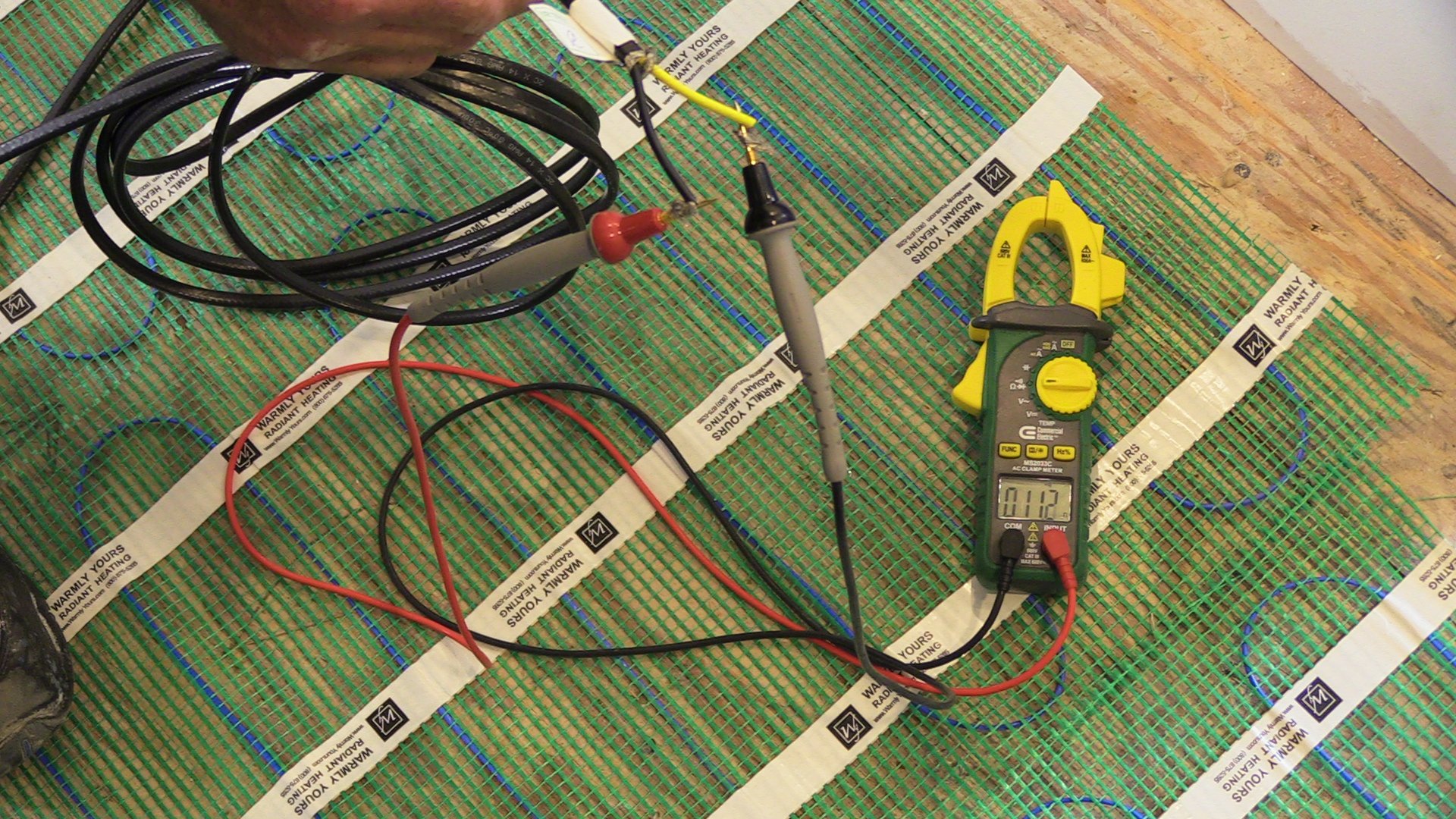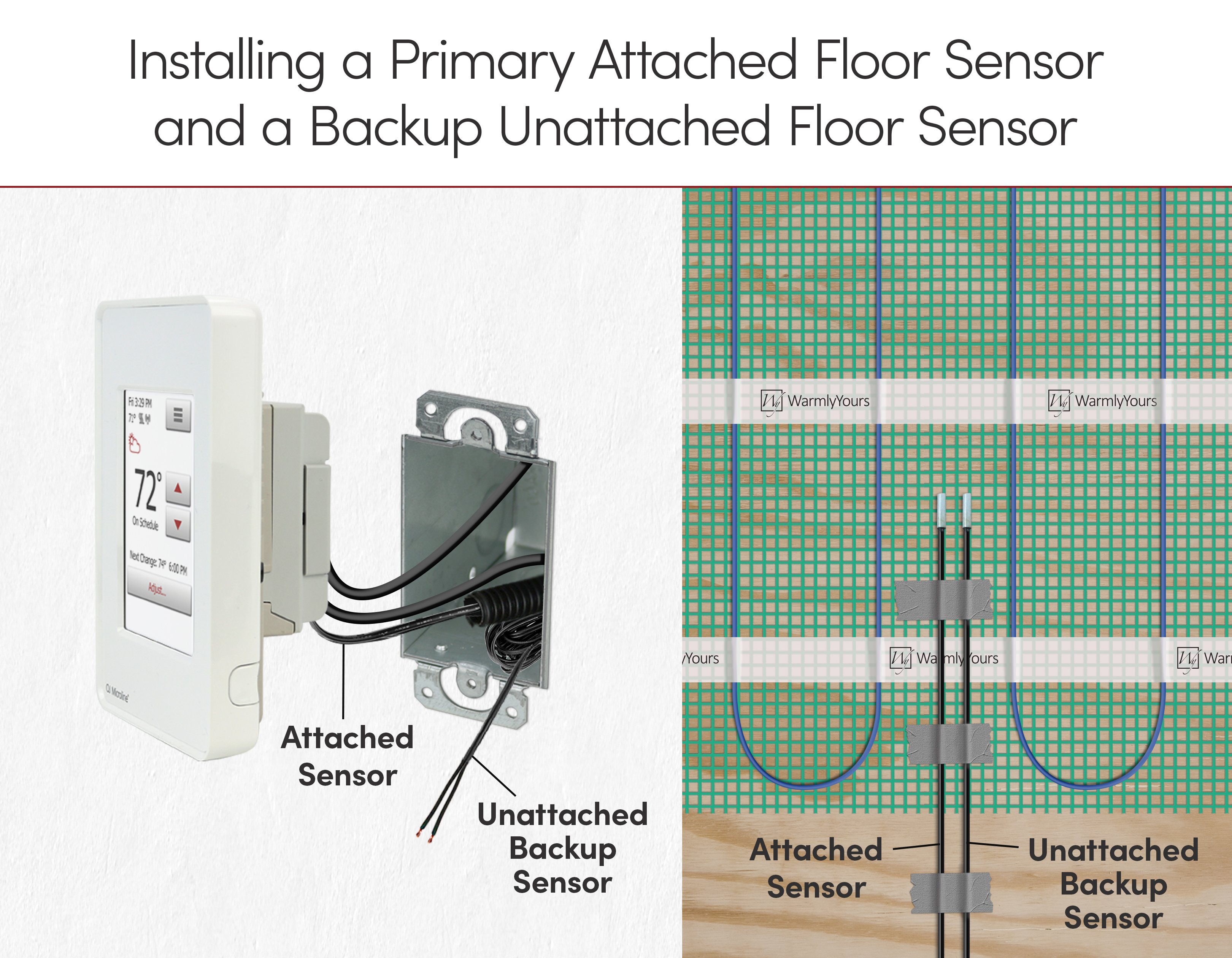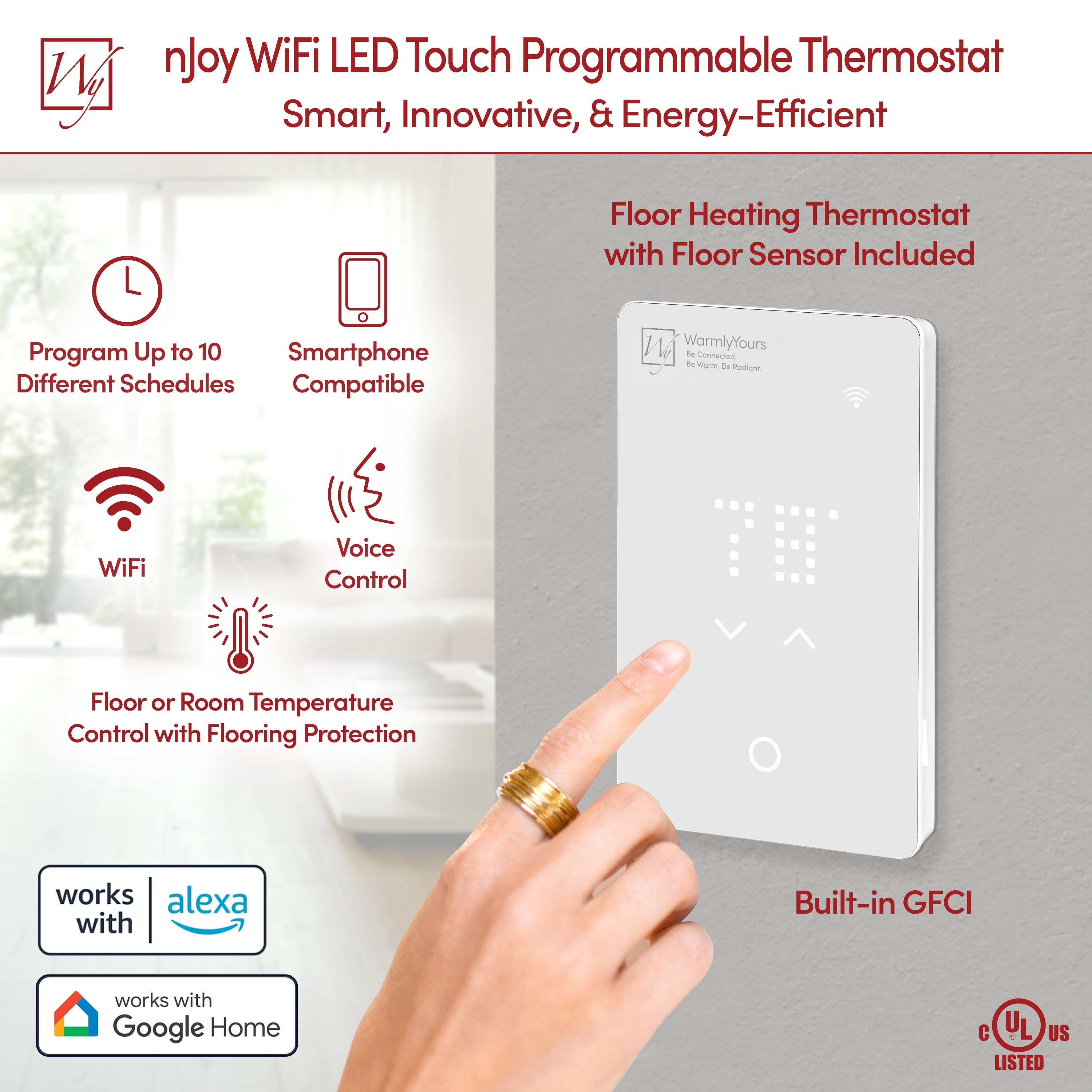How to Install Electric Radiant Floor Heating in 9 Easy Steps

In This Article
Learn how to enhance comfort and energy efficiency in your home with this easy-to-follow guide on installing electric radiant floor heating.
Step-by-Step Installation Guide
1. How Do I Create a Floor Plan for Radiant Heating?
Measure the area you want heated, excluding permanent fixtures. Submit your measurements using our free SmartPlan tool for a personalized floor heating layout.
2. Which Tools and Materials Do I Need for Floor Heating Installation?
For a successful installation, you'll need:
- Digital ohmmeter (for continuity testing)
- Circuit Check device (alerts for cable damage during installation)
- Scissors (for cutting mesh)
- Staple gun or hot glue gun (to secure mats to the subfloor)
- Tape measure (accurate layout measurement)
- Splice kit (for emergency cable repairs)
Download printable checklists:
3. How Do I Perform Initial Testing on Floor Heating Mats or Cables?
Test your heating system with a digital ohmmeter before installation. Readings should be within 15% of the UL label provided with your product.

4. How Do I Prepare the Subfloor for Electric Radiant Heating?
Clear sharp objects and debris from the subfloor to prevent damage. Clearly mark positions for permanent fixtures.
5. What's the Best Way to Install the Heating Mats or Cables?
Roll out the heating mat or cable system cable-side down following your installation plan. For floor heating mats, cut only the mesh—never the cable itself—to fit your space. Cable systems allow customizable spacing at 2", 3", 4", or 5" for flexible coverage and budget management. Secure cables or mats to the subfloor using hot glue or staples.
Connect the Circuit Check Device
Before fully securing the system, attach a Circuit Check to detect accidental cable damage during installation.
Why is the Circuit Check Important?
Watch this quick video on the importance of a Circuit Check and how to attach it:
📹 Using a Circuit Check When Installing a Heated Floor System
Keep the Circuit Check connected until your flooring is fully installed.
6. How Do I Install the Floor Temperature and Backup Sensors?
Your WarmlyYours floor heating thermostat includes two sensors—a primary and a backup sensor (backup provided only with thermostat purchase). Position the primary sensor between two heating cables, about 6 inches into the heated area, securing it firmly. Install the backup sensor nearby but leave it unconnected. Sensor failure is rare, but this precaution allows easy reconnection without removing flooring.

7. Why Should I Retest the Floor Heating System After Installation?
Use your digital ohmmeter and Circuit Check device again after installation to ensure system integrity. Document all readings for warranty purposes.
8. How Should the Radiant Floor Heating Thermostat Be Installed?
Hire a licensed electrician to install your thermostat according to local electrical codes and the provided manufacturer's instructions.

9. How Do I Properly Install Flooring Over Radiant Heating?
Apply your selected flooring over the radiant heating system. Allow all adhesives, thinset, grout, or self-leveling compounds to fully cure (typically 7–14 days) before activating your system.
Quick Reference Table
| Installation Step | Action & Details |
|---|---|
| Floor Plan | Measure area, submit via SmartPlan |
| Tools & Materials | Gather and verify essential tools |
| Initial Testing | Check product continuity before installation |
| Subfloor Inspection | Clear debris, mark fixture locations |
| System Installation | Install mats/cables, secure firmly |
| Sensor Placement | Install primary & backup sensors |
| Secondary Testing | Confirm system integrity again |
| Thermostat Wiring | Electrician completes wiring |
| Flooring Installation | Install flooring, cure before powering |
Frequently Asked Questions
What spacing should I use between heating cables?
Spacing options range from 2″ to 5″, allowing you to balance between heating coverage and budget. A tighter spacing (2″–3″) delivers more heat; wider spacing (4″–5″) is ideal for areas needing less intense warming.
Can I shorten or cut the heating cable if needed?
No. Never cut the heating cable itself—whether using a mat or cable system. You may only trim the mesh in mats to turn and fit your space. Cutting the cable will void your warranty and prevent it from functioning.
Do I need insulation beneath the heating system?
Yes, it’s highly recommended for concrete subfloors to prevent heat loss downward. Use ThermalSheet™ insulation for best efficiency and performance.
Are floor sensors necessary?
Absolutely. Every thermostat comes with a primary and a backup sensor. The primary sensor ensures accurate temperature control, while the backup protects against rare primary sensor failures—without the need to remove your flooring
Key Tips for a Successful Installation
- Verify Electrical Capacity During Planning
- Test your heating system before, during, and after installation.
- Always follow the product manual and manufacturer's instructions.
- Contact technical support immediately if issues arise.
Ready to Upgrade Your Comfort?
- Schedule your free, personalized consultation with a WarmlyYours radiant heating expert.
- Prefer DIY? Download our comprehensive installation checklist.
- Have questions? Our expert support team is available 24/7.
Installing electric radiant floor heating is a straightforward way to add comfort and efficiency to your home. Follow these nine easy steps for a successful radiant heat installation.
Have Questions About Your Project?
Our team of Radiant Experts is ready to help!
Stay Updated
Get the latest radiant heating news and tips delivered to your inbox.




